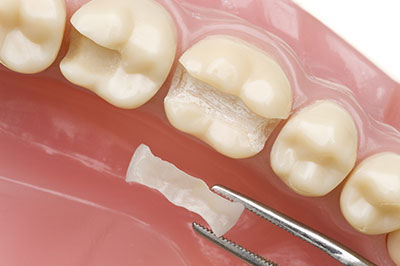


Dental inlays and onlays offer an excellent alternative to “direct” amalgam or composite fillings to restore teeth that have sustained some damage, but not enough to require a full coverage crown. While “direct” fillings such as dental amalgam and composite fillings are placed immediately after the decay or damage is removed and the tooth is prepared, inlays and onlays are known as “indirect” fillings. This means that they are fabricated outside of the mouth prior to final bonding or cementation.
While in the past, many inlays and onlays were caste from gold; today’s dental inlays and onlays are typically custom made of either the highest grade of dental porcelain or composite resins. In addition to providing an exact match to the color of tooth for a cosmetically pleasing result, inlays and onlays have the distinct advantages of being more durable than other fillings, preserving more underlying tooth structure and actually strengthening the tooth so that it can bear up to 50 to 75 percent more chewing forces.
Inlays and onlays only differ from each other in the amount of tooth structure they cover. An inlay is fabricated when the replacement of tooth structure does not require coverage of any cusp tips. If the damage from decay or injury is more extensive and involves more of the tooth’s chewing surface, including one or more cusp tips, an onlay is required.
Both inlays and onlays are fabricated outside of the mouth based upon the exact specifications provided by an impression of the prepared tooth. The final inlay or onlay is then custom made by either a dental laboratory or in-office with a same day system.